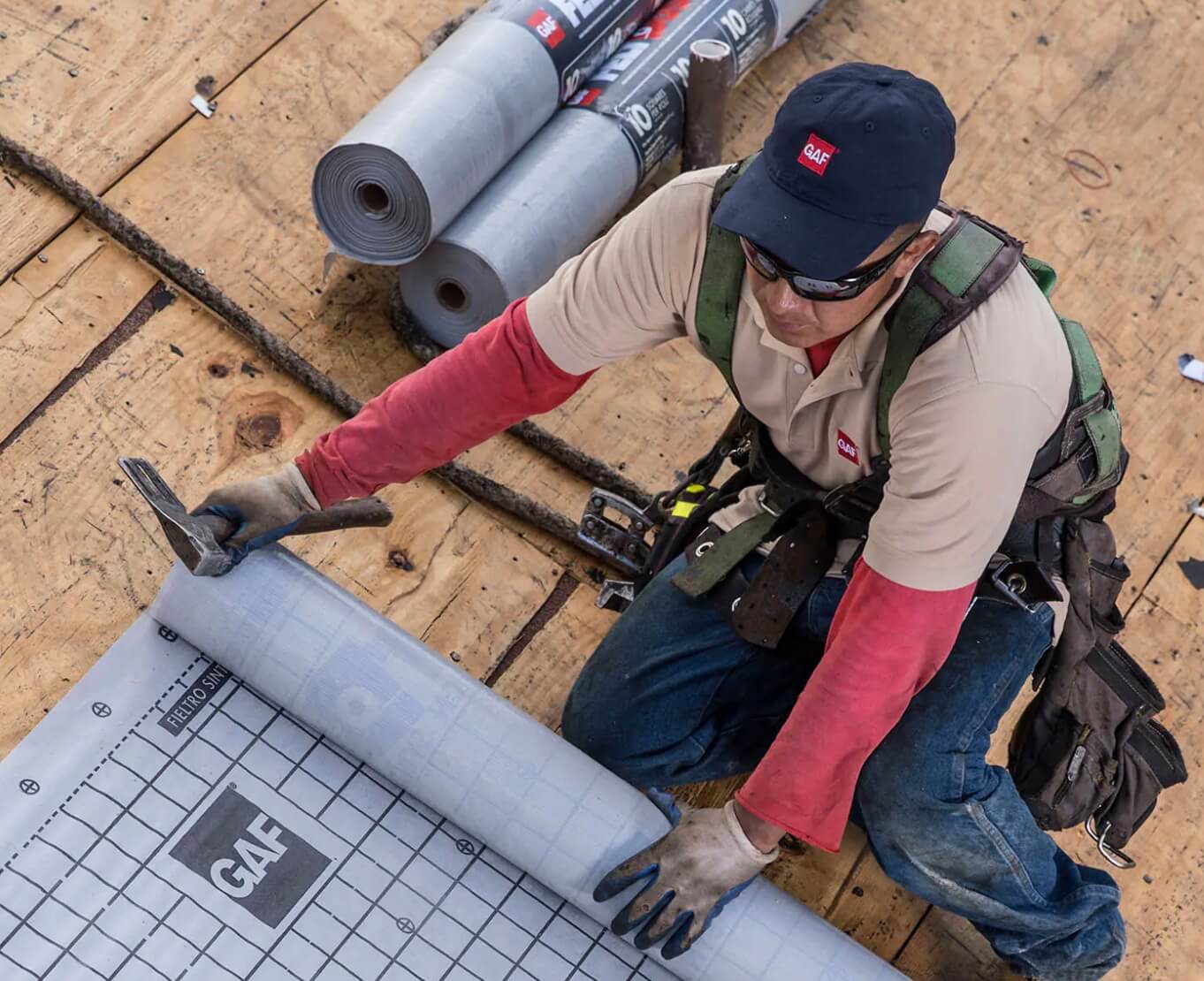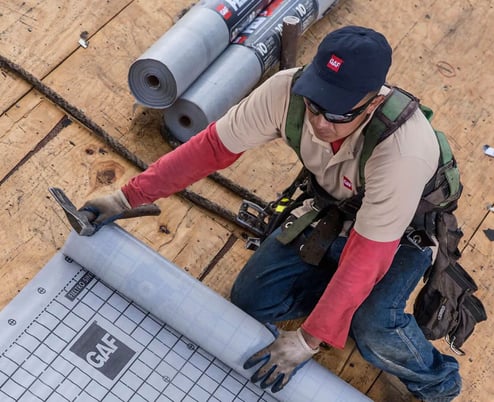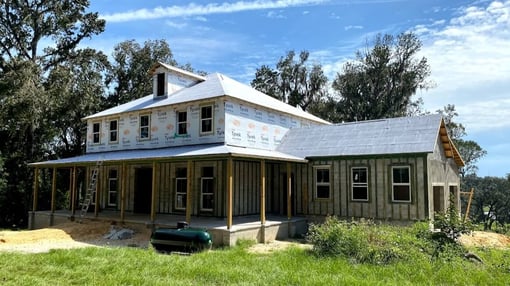Everything You Should Know About Roof Underlayment
February , 2023 | 7 min. read

Everything begins with a foundation. Think about it- almost anything you can think of consists of various aspects, whether physical or metaphysical. All of these components shape together to form one whole thing. Roofing is no different. When some picture a roof in their mind, they imagine the outer layer exposed to the world. This is shown to the eye when someone is passing, but it doesn't mean that's all there is to it.
A roof comprises many elements, often beginning with a critical layer of "underlayment." This protection barrier helps seal your home from the harm that severe weather can cause. By damage, we mean leaks and moisture build-up in the home. Excess water seeping into your residence is never good, potentially causing mold and mildew, water contamination, structural damage, and financial ruin. Did we mention critters, too? Animals and bugs like water, and they'll find a way to get to it, even if it's in your home.
At RoofCrafters, we value the importance of making an informed decision, and that starts with education. We've been installing roofs and every component that makes them resilient and robust for thirty years. After three decades of serving the southeast, we've learned a thing or two along the way about underlayment.
If you're searching for the perfect resource to cover roof underlayment’s refined details, you've reached your destination. In this article, we're delving into all things underlayment, from what it's constructed of to why you would need it in the first place. I'm ready. Are you ready?
What Is Roof Underlayment?
Roof underlayment is a waterproof base installed directly on your roof deck before any other material. It acts as a vapor barrier between your residence and the roof deck, helping protect it from the effects of adverse weather conditions.

Having an additional element of protection for your roof can be essential if you live in an area that experiences extreme weather patterns. If you live in the southeast, we reckon that you do. Underlayment is that stable layer of safety that helps protect the roof from moisture, as well as being something your shingles can rest safely on.
Roof underlayment is an essential and mandatory part of roof installation. As mentioned above, it's designed to add more protection to the roof from elements like wind, rain, and snow. Every roof needs an extra defense against harsh weather, which is why it's such a pivotal part of the process.
What Types of Roof Underlayment Are Available?
There are three main kinds of roof underlayment. The type you ultimately decide on will depend on several factors, like the region you live in.
Synthetic Underlayment
This type of underlayment started booming around a decade ago and has been the most popular choice among homeowners since. Materials may be different depending on the manufacturer, but usually, most synthetic underlayment includes various layers of polymers that have been woven together.
There are many known advantages of synthetic underlayment. They're often chosen for being:
-
Durable, Tear-resistant
-
Lighter (more coverage per roll)
-
Clear Lines and Overlap Guides
-
Water-repelling
The cost of synthetic roof underlayments is $0.17 to $0.55 per square ft. of material.
Asphalt Saturated Felt
This is one of the more mature types of underlayment available, and it's typically referred to as felt paper or tar paper. Felt underlayment is made up of an organic paper or mat that's been saturated in asphalt, helping with moisture resistance. This roofing material is available in two different weights:
-
15 pounds per 100 square ft. (No. 15 felt)
-
30 pounds per 100 square ft. (No. 30 felt)
No. 15 felt is known to tear, so it's usually better suited for lightweight projects. Your contractor may recommend No. 30 felt because it's more durable than the other. Multiple layers can be applied for added protection from harsh weather.
Some roofing contractors use this underlayment when working with tile or slate shingles, but others may prefer self-adhered underlayment. The contractor you choose and where you live will be the main factors in determining if this one is right for you. Many have chosen not to use it anymore.
Asphalt-saturated felt costs between $0.05 to $0.50 per square ft. of material.
Self-Adhered Underlayment
This one can be referred to as "rubberized" underlayment because of its high percentages of asphalt and rubber polymers, which helps it be resistant to water.
Self-adhered underlayments have sticky backs that help adhere them to the roof deck. The tacky backing helps create a waterproof barrier between the roof deck and the underlayment. This underlayment option was designed to help protect the roof from damage in areas where water usually collects or where penetration in the roof deck occurs. Sites that are prone to leaks include valleys, eaves, vents, chimneys, and skylights.
Self-adhered underlayment is helpful in areas that commonly get severe winter weather. The surface of self-adhered underlayment can contain polyethylene or polyester to add to its weather resistance abilities.
Self-adhered underlayment costs about $0.55 to $0.65 per square ft. of material. Keep in mind that pricing varies.
Why Is Roof Underlayment Important?
Roof underlayment is essential because it acts as a barrier from moisture, keeping your roof safe from weather that can potentially cause costly damage.
Every roof needs an added layer of protection because the reality is that no one can stop harsh weather. Your roof is usually the first thing that's affected by rain and wind, so it needs to be sturdy. By supporting your shingles, roof underlayment is your home's first line of defense against the elements.
Additionally, they block precipitation, reflect the sun's rays, and keep homes safe from vigorous wind gusts. Wind can lift shingles from the roof since they overlap and aren't sealed at all corners, which makes underlayment a great backup. When shingles become vulnerable and brittle over time due to age, underlayment can help save the day.
How Is Roof Underlayment Installed?
Underlayment installation can be pretty straightforward. How exactly it's installed, however, is dependent on your contractor. There are different methods and ways of installing the underlayment that can be performed effectively.

Here's an example of how it may go, in simple terms. Your chosen contractor will place strips of underlayment horizontally across the roof, overlapping the layers by at least four inches. They'll staple the strip at the ends, overlapping the underlayment where the two parts of the roof meet in the valley.
No matter which way your contractor chooses to install the underlayment, proper application isn't just necessary; it's critical. If the installation isn't adequately performed, you could risk leaks. You know what happens after leaks- hello, mold, mildew, and other issues.
Is Roof Underlayment an Option for Me?
Roof underlayment is a great choice for any home. Now that you know all about it, you may be ready to explore other roofing system elements. If that's the case, we suggest reading "The Anatomy of a Roof." It's a great place to pick up from where you left off at roof underlayment. And if that doesn't tickle your fancy, we have an abundance of resources you can refer to in our learning center.
At RoofCrafters, we know that getting educated on the different aspects of a roof can leave you asking many questions. That's why we want you to understand that you aren't alone during this process, and we're here to help make things a breeze for you!
If you feel you're ready to talk to a licensed professional, RoofCrafters is eager to assist you. You can touch base with one of our friendly representatives by visiting our contact page. No matter what's going through your mind, we're here to lend a hand!
My name is Anthony, and I am the lead estimator of RoofCrafters’ Georgia/South Carolina division. The roof is the most important part of a structure, and people count on that to protect themselves and their families. That is one of the many reasons why I love my job and enjoy coming to work every day. The continuous training, honesty, and providing the customer with the Roofcrafters experience is what makes me the best in the business.





